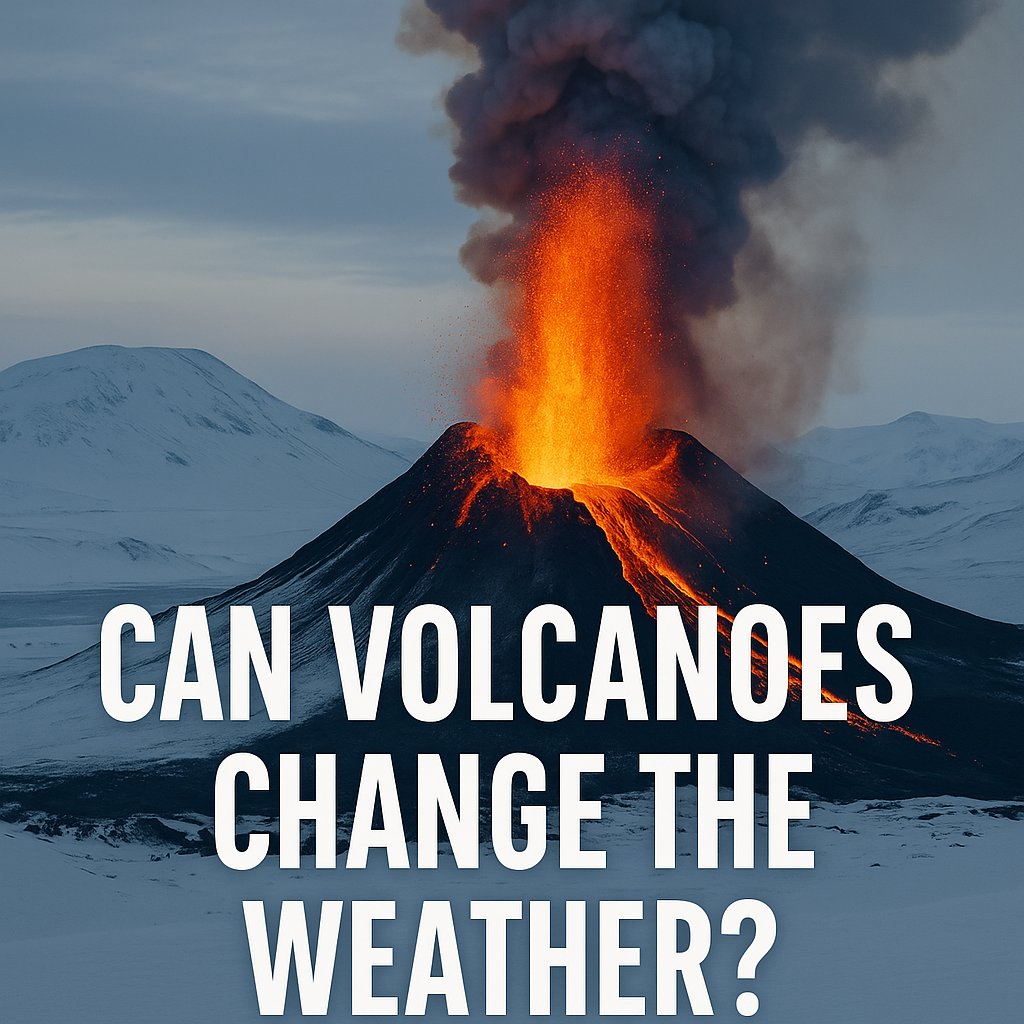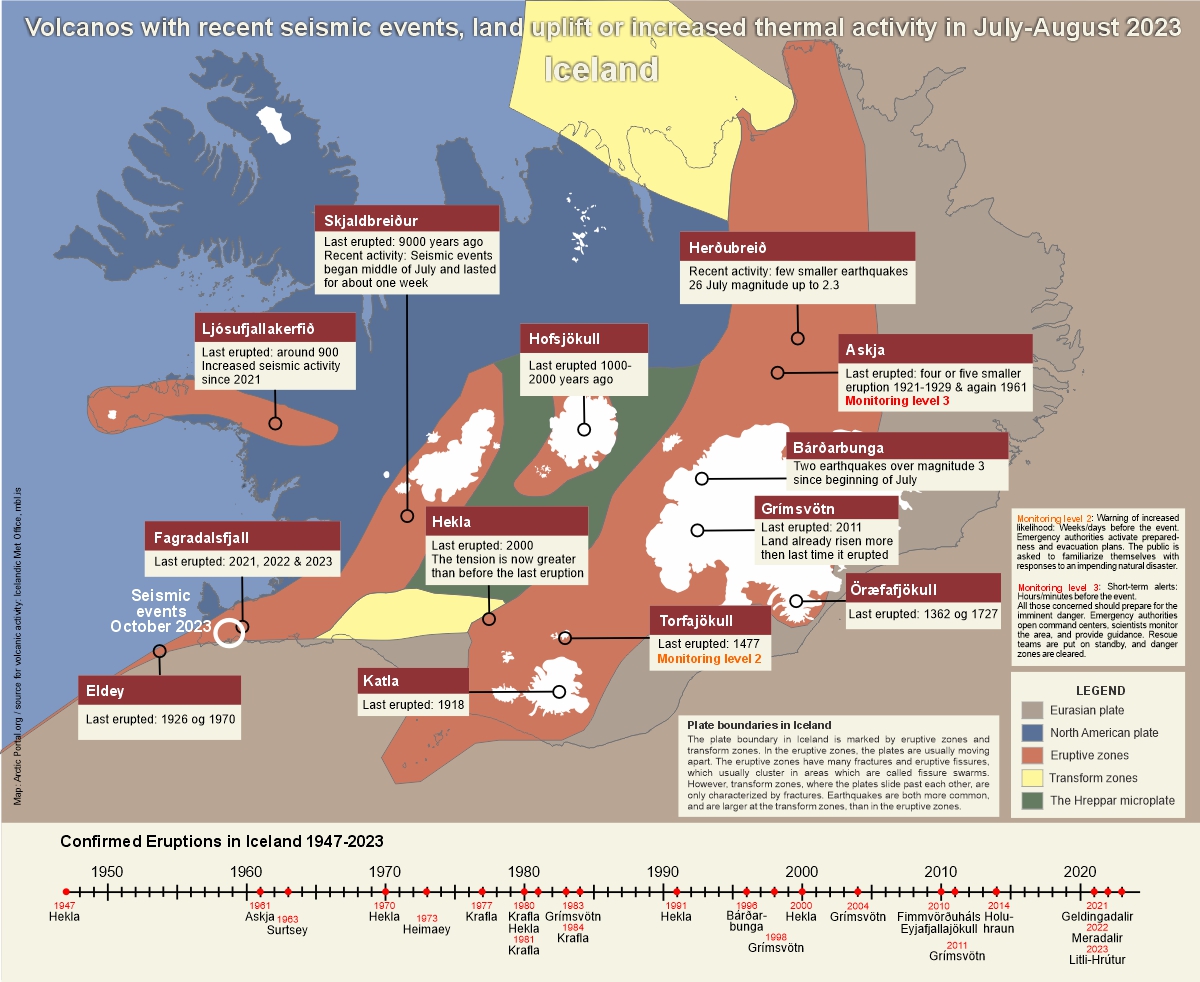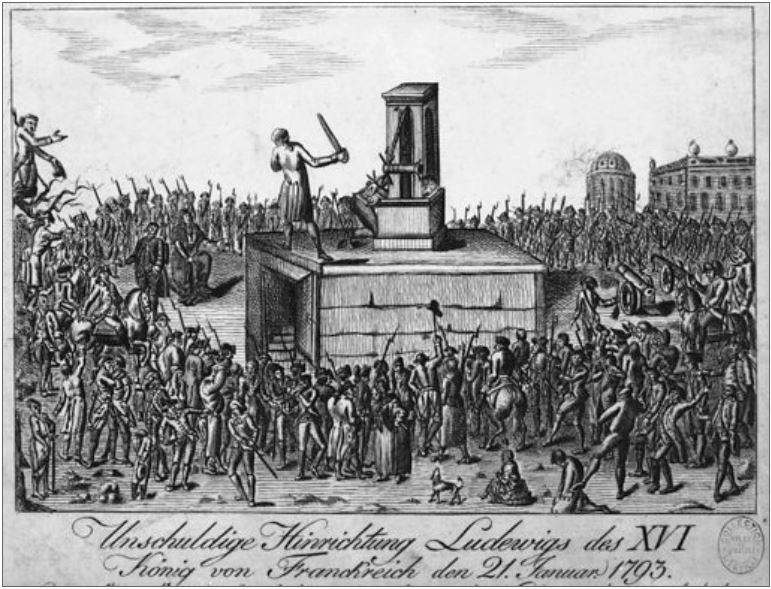New research shows that explosive high-latitude eruptions—like those possible in Iceland—could trigger dramatic climate disruptions.New research shows that explosive high-latitude eruptions—like those possible in Iceland—could trigger dramatic climate disruptions.

If you think a volcanic eruption only affects the area near the blast, think again. A new study published in Atmospheric Chemistry and Physics ("Stratospheric circulation response to large Northern Hemisphere high-latitude volcanic eruptions in a global climate model." Authors: Hera Guðlaugsdóttir, Yannick Peings, Davide Zanchettin, and Gudrun Magnusdottir) suggests that massive volcanic eruptions in the Northern Hemisphere, particularly in high-latitude regions like Iceland, could disrupt global weather patterns for years, especially in winter.
While scientists have long understood that tropical eruptions can cool the planet and influence atmospheric dynamics, this study breaks new ground by investigating how northern, high-latitude eruptions interact with the climate system.
The researchers ran complex climate model simulations to examine how stratospheric aerosols, tiny particles ejected high into the atmosphere during eruptions, affect air circulation and winter weather patterns over three years after an eruption.
A Tale of Two Mechanisms
The research identified two key ways these eruptions impact the climate:
- Top-down mechanism: As volcanic aerosols absorb sunlight in the stratosphere, they cause warming at high altitudes. This heating strengthens the polar vortex—the high-altitude wind system that spins around the Arctic. A stronger vortex usually traps cold air in the north, keeping winters milder in Europe and North America.
- Bottom-up mechanism: Surface cooling caused by aerosols changes wind patterns near the ground, allowing planetary waves to push upward into the stratosphere. This disrupts the polar vortex, increasing the risk of sudden stratospheric warming events (SSWs), which often unleash frigid Arctic air into the mid-latitudes.
In the model simulations, both mechanisms came into play—initially strengthening the polar vortex, but then weakening it in later winters. Remarkably, by the third winter, the simulations with a coupled ocean–atmosphere system showed an unusually high number of SSWs, sometimes more than one per season, a rare occurrence in the real-world climate record.
 Implications for the Northern Hemisphere
Implications for the Northern Hemisphere
This matters because SSWs can flip the Arctic Oscillation—a key driver of winter weather in the Northern Hemisphere—from positive to negative. A negative phase often results in blocked weather patterns and extreme cold spells across Europe, Asia, and North America.
The findings suggest that long-lasting, sulfur-rich eruptions from high-latitude volcanoes like Iceland’s Bárðarbunga or Öræfajökull—both of which are considered to be building toward potential activity—could have significant ripple effects on climate.
Historic examples back this up: the Laki eruption in 1783 and the Eldgjá eruption around 939 CE are thought to have cooled large parts of the Northern Hemisphere and triggered widespread climate anomalies, including harsh winters and crop failures.
A Call for Closer Monitoring
Because high-latitude eruptions behave differently than tropical ones, the authors stress the need for further research and better monitoring. Most climate models are tuned to tropical scenarios like Mount Pinatubo in 1991, but eruptions in places like Iceland or Alaska could follow very different paths, with potentially unpredictable consequences.
In a world already grappling with climate extremes, understanding how a major volcanic eruption might tip the balance is no longer just academic curiosity—it’s a question of preparedness.
The above text is based on the article “Stratospheric circulation response to large Northern Hemisphere high-latitude volcanic eruptions in a global climate model” published in Atmospheric Chemistry and Physics.
 The Laki Eruption and the French Revolution
The Laki Eruption and the French Revolution
One of the most striking historical examples of how volcanic activity can impact climate and society is the 1783–1784 eruption of the Laki fissure in Iceland. Lasting for eight months, this massive event released vast quantities of volcanic gases, including an estimated 120 million tonnes of sulfur dioxide into the atmosphere. The resulting "Laki haze" spread across much of the Northern Hemisphere, lowering temperatures and disrupting weather patterns.
In France, the summer of 1783 turned hazy and unusually cold. The resulting climatic anomalies led to widespread crop failures and food shortages, which compounded the economic distress already affecting much of the French population. Historians and climate scientists have argued that this atmospheric disruption, and the resulting hardship, may have been one of several contributing factors that fueled public unrest in the years leading up to the French Revolution in 1789.
Though the connection between the Laki eruption and the Revolution is complex and indirect, it serves as a powerful illustration of how distant environmental events can influence global human history—linking Iceland’s geologic volatility to societal upheaval far beyond its shores.
